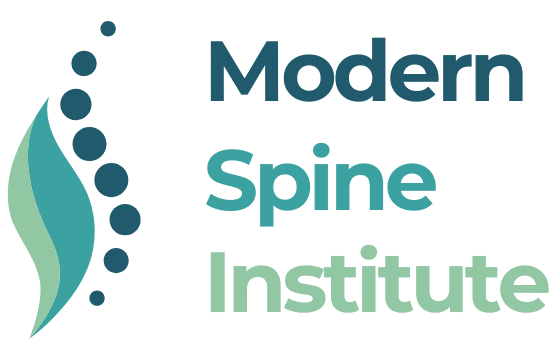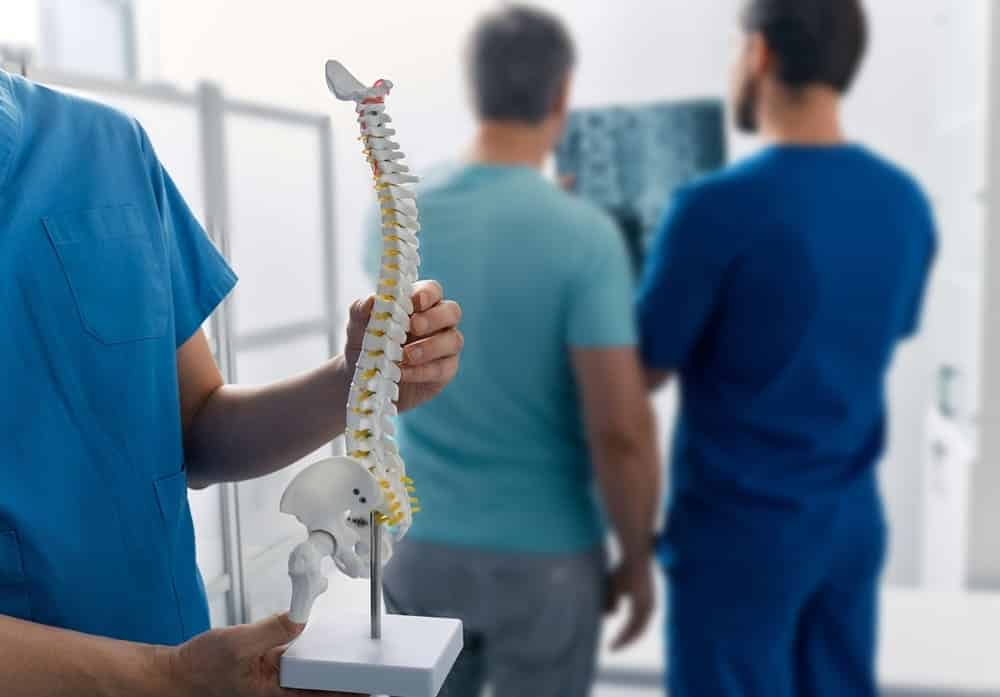You may notice your back pain worsening or your posture changing as you age. If so, you’re likely wondering if these changes signal a serious condition.
Adult spinal curvature can develop from childhood scoliosis that progresses or appears for the first time due to degenerative changes in your spine. Understanding when conservative treatments fall short and surgical intervention becomes necessary can help you make informed decisions about your spine health.
Scoliosis in adults affects many people worldwide, causing pain, functional limitations, and reduced quality of life. Seeking an evaluation from an experienced spine surgeon in New Jersey can provide you with crucial insights into the right treatment approach for your condition. In this guide, Grigory Goldberg, MD, will explain scoliosis in adults to help you understand when surgical options may become necessary for optimal spine health.
Understanding Adult Scoliosis Development
Adult scoliosis differs significantly from the childhood form of this spinal condition. You can develop this condition through the progression of existing childhood scoliosis or from the new onset of the disease due to spinal degeneration from natural aging. This natural aging process causes wear and tear on your spinal discs, joints, and supporting structures over time.
Degenerative changes in your spine create instability that can lead to abnormal curvature over time. According to clinical research, degenerative lumbar scoliosis has a prevalence of 35.5% in patients older than 60. These changes often accelerate after age 50, particularly in postmenopausal women, due to bone density loss.
According to the Orthopedic Research Society, degenerative scoliosis accounts for most scoliosis cases in older populations aged 65 years and older. This means that the majority of older adults dealing with spinal curvature are experiencing wear and tear on their discs and joints. Several factors increase your risk of developing adult spinal curvature, including previous untreated childhood scoliosis, osteoporosis, degenerative disc disease, spinal trauma, and genetic predisposition.
Recognizing Symptoms and When To See a Spine Surgeon in New Jersey
Scoliosis in adults progresses through distinct symptoms that differ from childhood presentations. You may experience back pain as the primary complaint, unlike children, who typically show painless curve progression. Nerve compression becomes a significant concern as your spinal curvature progresses, causing leg pain, numbness, or weakness.
Additional symptoms that warrant a professional evaluation include visible changes in your posture or body symmetry, uneven shoulder or hip height, and increased fatigue during daily activities. With severe thoracic curves, you might experience difficulty maintaining an upright posture or shortness of breath. Some patients also struggle with early satiety or feeling full quickly from significant curves that compress abdominal organs.
Scoliosis treatment through surgery becomes necessary when conservative measures fail to provide adequate relief. You should seek an immediate evaluation from our spine surgeons if you experience progressive worsening of symptoms, the inability to stand upright for daily activities, or severe neurological symptoms like significant leg weakness.
Non-Surgical Scoliosis Care Options
Non-surgical scoliosis care forms the foundation of treatment for many adults with spinal curvature. Physical therapy plays a crucial role in strengthening your core muscles and improving spinal stability under professional guidance. Pain management strategies include NSAIDs, epidural steroid injections, and muscle relaxants prescribed by professional medical teams.
Activity modifications and ergonomic adjustments help you manage symptoms during daily tasks. Proper body mechanics and workspace ergonomics can reduce strain on your spine throughout the day when implemented correctly. Your adult scoliosis treatment plan might include a mixture of daily stretches, posture recommendations, medications, physical therapy, and more.
Scoliosis Surgery Options for Adults
Scoliosis surgery options vary based on your specific curve pattern, symptoms, and treatment goals. The American Association of Neurological Surgeons reports that 38,000 patients undergo spinal fusion surgery annually. Spine surgeons may approach the spine from the back, front, or both directions, depending on your curve characteristics.
Our team offers advanced surgical techniques to address scoliosis in adults, including minimally invasive procedures, specialized bone cuts for severe curves, and side-approach surgery. Decompression procedures may accompany fusion surgery when nerve compression causes leg symptoms.
Spine Curvature Management and Recovery
Spine curvature management extends well beyond the surgical procedure itself, encompassing comprehensive postoperative rehabilitation. Recovery follows a structured timeline with your medical team guiding you through each stage.
Pain management during recovery involves a multimodal approach supervised by medical professionals. Physical therapy begins early under supervised guidance to help you maintain mobility and prevent complications. Your provider will walk you through each stage of the recovery process to help you regain full mobility.
Expert Scoliosis Care With Dr. Grigory Goldberg
Scoliosis in adults requires an expert evaluation and individualized treatment planning to achieve optimal outcomes. Dr. Grigory Goldberg’s team specializes in comprehensive spine care, offering conservative and surgical treatment options tailored to your specific needs. Our practice combines advanced surgical techniques with compassionate patient care.
Learn more about advanced treatment options by understanding endoscopic spine surgery and how it may benefit your specific condition. Our doctors accept most insurance plans, including workers’ compensation, no-fault, and PIP (personal injury protection). Same-day appointments may be available.
If you’re experiencing symptoms of adult scoliosis or need an evaluation by an experienced spine surgeon in New Jersey, book an appointment with Grigory Goldberg, MD, at (844) 373-2772 and get expert care.
FAQs Answered by a Spine Surgeon in New Jersey
Many patients have questions about adult scoliosis diagnostics, treatment options, and recovery expectations. We’ve compiled the most common questions we hear patients ask during their initial evaluations below:
At What Age Do Adults Typically Develop Scoliosis?
Adult scoliosis can develop at any age, but degenerative scoliosis most commonly appears after age 50.
Can Physical Therapy Stop Scoliosis Progression in Adults?
Professional physical therapy cannot stop spinal curvature, but it may improve pain levels and functional capacity. Our programs focus on strengthening core muscles and improving posture for better daily function.
How Quickly Does Scoliosis in Adults Progress?
Adult scoliosis progression varies significantly between individuals. Our spine specialists in New Jersey can monitor curve progression through regular professional evaluations.



